The Sydney Morning Herald published its annual analysis of public and private school enrolments last week. So I thought I’d have a look behind the stats to see if there is more nuance when you dive a little deeper. The Herald’s key message was:
An annual stocktake of the nation’s schools, released by the Australian Bureau of Statistics on Friday, shows parents continuing a shift away from private education that first started three years ago.
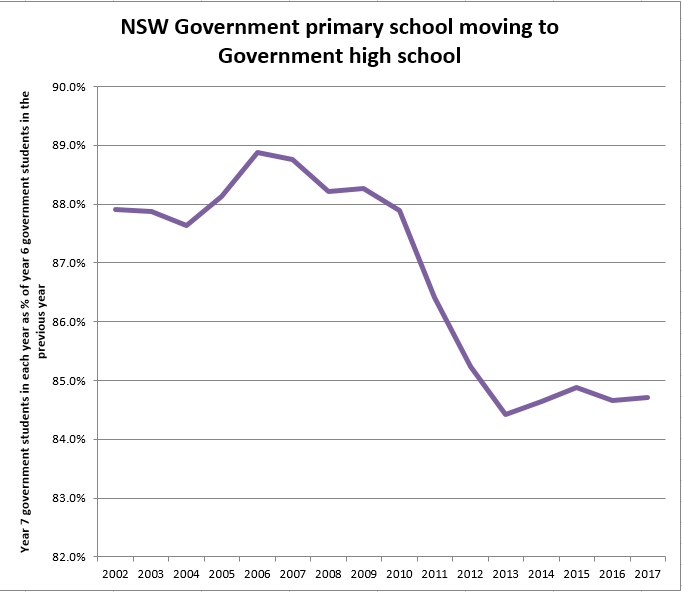
My view is that there is a move back towards the government system. That’s mostly in the primary years. At secondary schools, though, what is largely happening is a continuation of the move towards the independent schools (which is a combination of the very expensive GPS style private schools, and alternative local schools). But the sector that is losing out here is the catholic system, with the government secondary schools largely maintaining their share of students.
I’ve blogged about this a couple of times before (here and here). And both times I’ve pointed out that there is a massive difference between primary and secondary schools. That’s true Australia wide, but particularly true here in Sydney. For example, in my suburb 79% of primary school students go to government schools and 54% of secondary school students go to government schools. For Sydney as a whole, those stats are 68% and 55% and for Australia, they are 68% and 57%. So the growth in school population (which means there are more kids at the younger ages than the older ages) will automatically increase the proportion of children at government schools, even if nobody’s behaviour changes. This graph shows what happens between Year 6 and year 7 for government school students each year. The proportion of children who move from the government primary system to the government high school system has stabilised at around 85%.
So what is happening this year? Let’s look at the actual statistics. It’s an interesting mix. First of all, the proportion of children in government schools in both primary and secondary schools has gone up. Starting with the graph of primary students, we can see that the government student proportion has continued an increase that started in 2013, when the long slide away from government primary schools reversed.
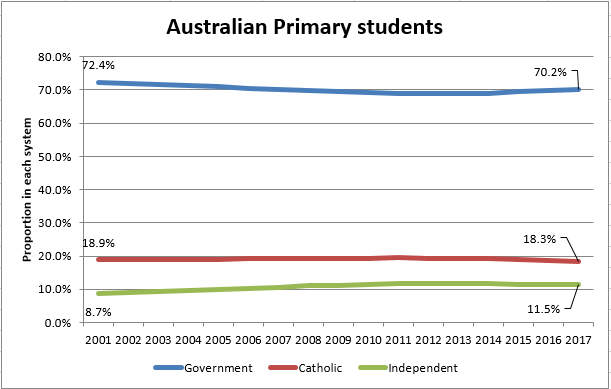
For secondary schools, the turnaround in government school enrolments only started last year, in 2016. In fact, it is pretty fragile so far, compared with a trend that looks more robust in the primary schools.
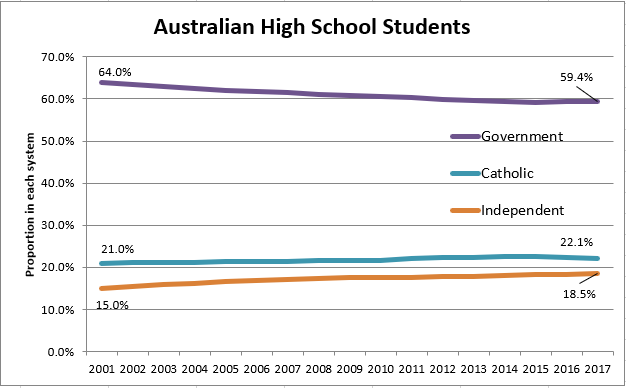
So in both cases, the proportion of government school students has gone up. But interestingly, so has the proportion of independent school students (especially in high schools where the change is quite material). Both systems are gaining at the expense of the catholic system. So the polarisation of choices continues.
In fact, at a total level, the catholic system lost 180 students between 2016 and 2017, while the total school system gained just over 50,000 students.
The secondary system was where all the losses were for the catholic system. Instead of gaining their “natural” share the growth in the secondary system of around 3,000 students, the catholic secondary system lost 1,000 students. The independent system took 3,000 of those students, and the government system took 1,000.
There is a whole lot going on in the politically vexed question of school funding – Gonski versions 1, 2 and 3, plus parents’ expectations of what will happen next are no doubt influencing parental choice, as well as how well each State manages its own education system.
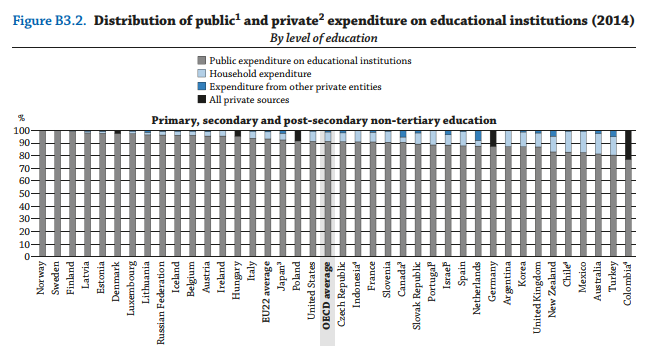 This OECD report (pdf) summarises the state of educational systems across the OECD. There is a whole lot of interesting information in there. I was looking for anything comparing Australia with other countries on public and private education. What I found is that Australia has the lowest proportion of educational funding for the whole of primary and secondary education that is public funding (vs private funding) in the OECD (81% compared with the OECD average of 91%).
This OECD report (pdf) summarises the state of educational systems across the OECD. There is a whole lot of interesting information in there. I was looking for anything comparing Australia with other countries on public and private education. What I found is that Australia has the lowest proportion of educational funding for the whole of primary and secondary education that is public funding (vs private funding) in the OECD (81% compared with the OECD average of 91%).
But that higher share of private funding doesn’t necessarily make the system more efficient (and the measure the OECD uses for efficiency is for the whole population, rather than necessarily the education of those at the top of the socio-economic tree).
This graph shows that Australia is at the middle of the pack on achieving a minimum proficiency level in reading and mathematics by the age of 15 (just above 70%) and also in the middle of the OECD pack on parity across the population – the OECD’s measure of equity. Given we are much higher up this ladder on many other aspects of the Human Development Index (as well as GDP per capita) we are punching below our weight on education.
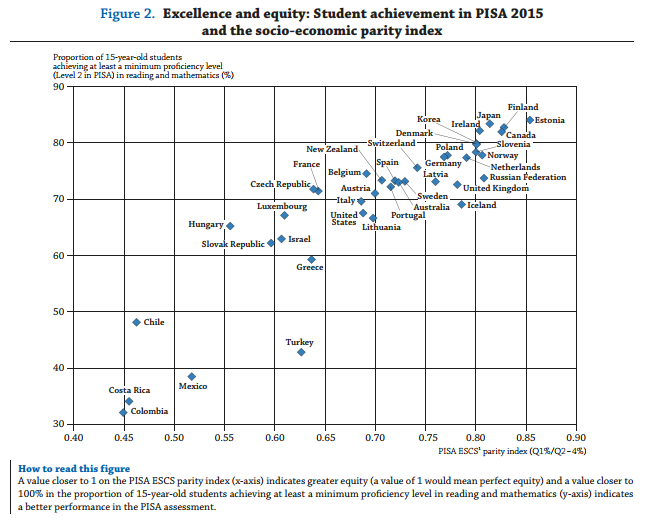
I’ll end this post with one of my favourite quotes from the author and vlogger John Green (I hope he said this, I haven’t found the original source)
Public education does not exist for the benefit of students or the benefit of their parents. It exists for the benefit of the social order.
We have discovered as a species that it is useful to have an educated population. You do not need to be a student or have a child who is a student to benefit from public education. Every second of every day of your life, you benefit from public education.
So let me explain why I like to pay taxes for schools, even though I don’t personally have a kid in school: It’s because I don’t like living in a country with a bunch of stupid people.
I’m glad we’ve turned the drift away from the public education system around in Australia. But fewer than 60% of children in Australia spend their entire schooling in the government system. That leads to political and funding risks for those children, as the parents of the other 40% reduce the political will for appropriate funding for the government system. This map of proportions by electorate boundary shows that voting for appropriate funding for government schools is likely to be quite variable by geography, with large swathes of Sydney where well under half of all students attend government schools.
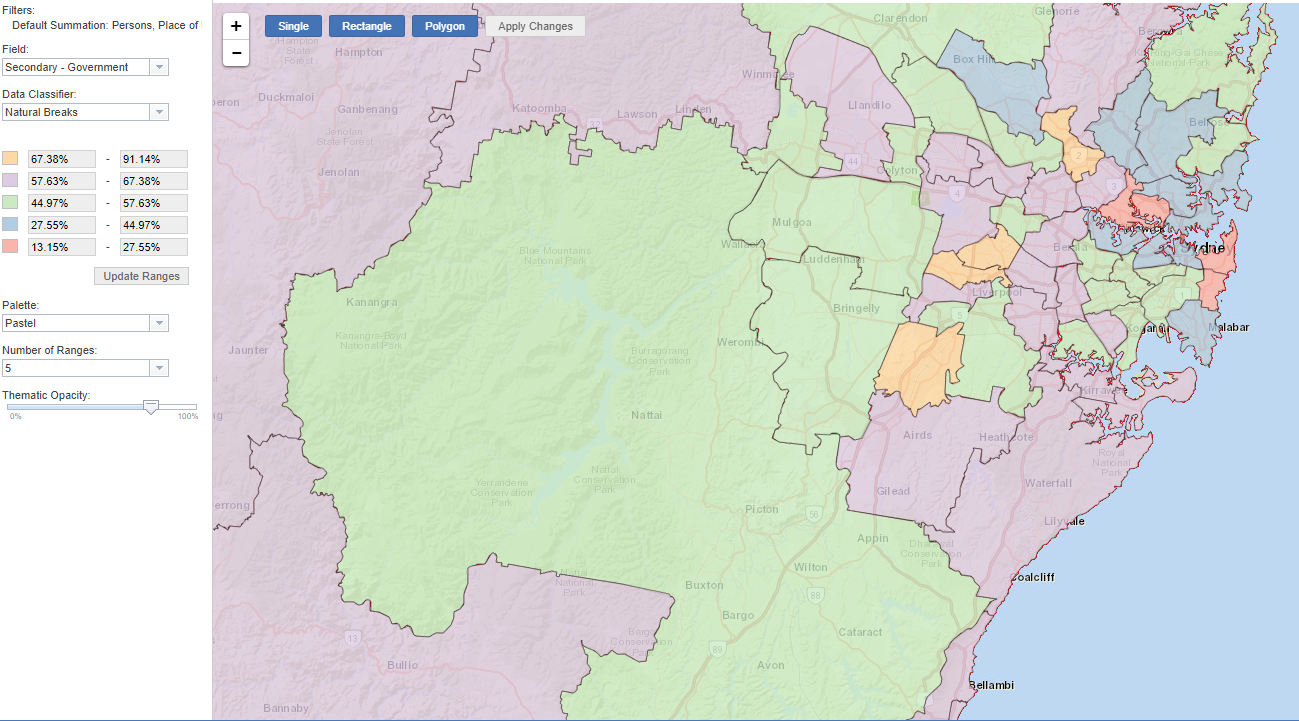
______________________________________________________________________
Disclosure: I attended government schools for my whole education as do my two children, who are at our local government high school. That means I do, deeply, care about the health of the government school system.

Thanks, Jennifer,
You have provided some thought-provoking analysis – and I appreciated the sentiments of John Green.
Martin